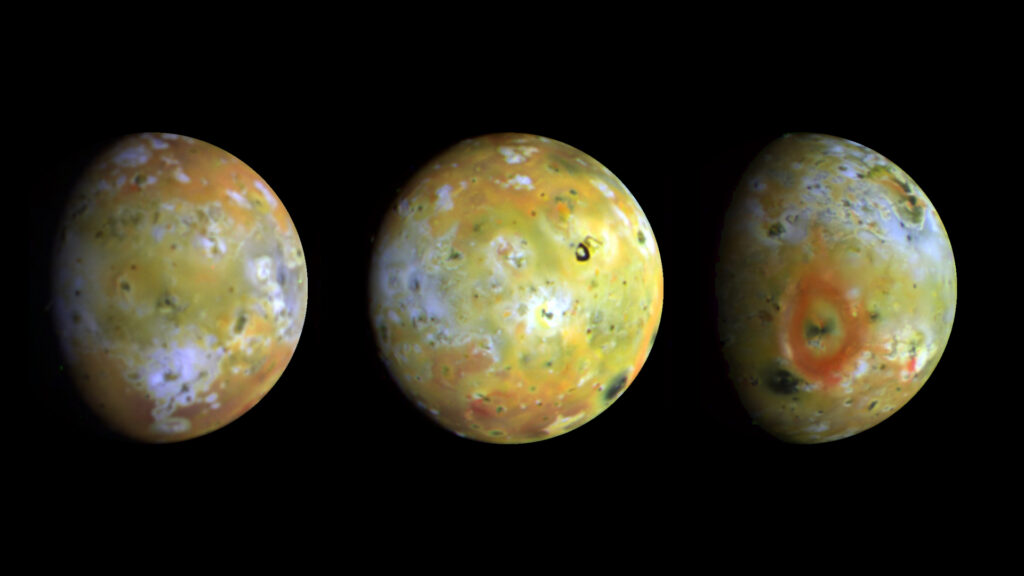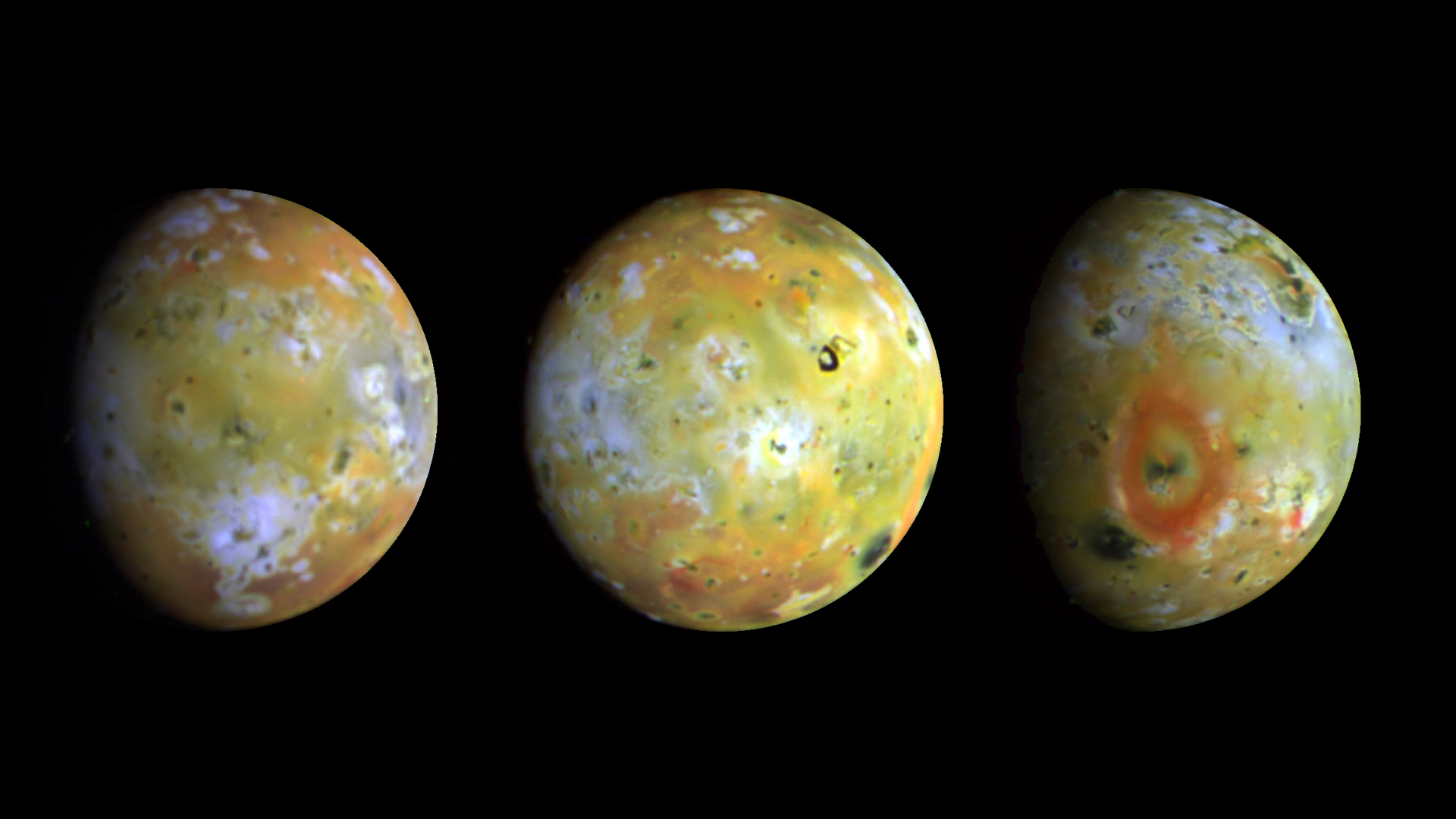Io is one of Jupiter’s many moons, and Io specifically is the fifth moon from Jupiter (Shekhtman & Thompson, 2020). It is one of the “Galilean moons”, which are the four largest moons orbiting Jupiter. All of these moons were discovered by Galileo Galilei, hence the name.
More information on Galileo’s discovery can be found on the page “Discovery of Io”.
Just like many other objects in space, Io was named after a female figure from mythology. In Io’s case, it was names after a woman of the same name from Greek and Roman mythology. Io is from a myth also including the Roman god Jupiter, more commonly known as Zeus from Greek myths (NASA, In depth 2021).
Io has an interesting look. It has a mix of yellow, brown, green, and orange colours, and is covered in dark splotches all across the surface. These, when looking closer, are volcanoes, many of which are active. All these active volcanoes mean that Io can have lakes of lava flowing on the surface (Montana State University, n.d.).
Io does not have any known moons of it’s own, and no known rings (Shekhtman & Thompson, 2020). Io also does not appear to have any water on its surface (NASA, In depth 2021).
The moon has an orbital period of about 1.8 Earth days as well as a rotational period of the same length (Shekhtman & Thompson, 2020). This means that the same side of Io is always facing Jupiter as it orbits the planet.

Io. Io handout. (n.d.). Retrieved October 30, 2022, from https://btc.montana.edu/ceres/html/ExtremeEnvironment/ExtremeIo.htm
NASA. (2021, July 19). In depth. NASA. Retrieved October 31, 2022, from https://solarsystem.nasa.gov/moons/jupiter-moons/io/in-depth/
Shekhtman, L., & Thompson, J. (2020, November 10). Io. NASA. Retrieved October 30, 2022, from https://solarsystem.nasa.gov/moons/jupiter-moons/io/overview/
